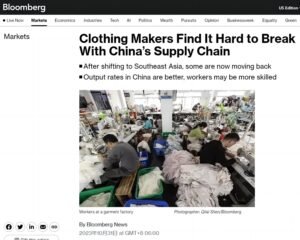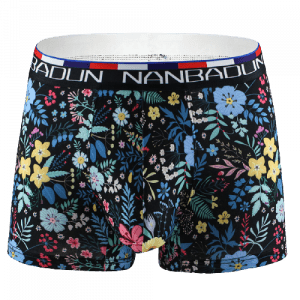Recently, the epidemic situation in Vietnam remains severe, with the number of cases continuing to rise in many places and the death rate rising rapidly. The epidemic has dealt a heavy blow to the Vietnamese economy, and local enterprises are facing serious business difficulties due to the epidemic.
According to statistics, 90,300 enterprises across Vietnam withdrew from the market in the first three quarters. At the same time, the epidemic’s blow to Vietnam’s manufacturing industry is gradually spreading to many links in the industrial chain, and the global supply chain of garments, shoes, and hats, electronic technology, and other industries have been disrupted. And production disruptions and shipping problems are too much for the European and American garment giants to bear: they are considering a new choice of the supply chain!
98.9% of business operations faced serious difficulties due to the epidemic, 90,300 companies delisted
According to data released by the General Statistics Office of Vietnam, Vietnam’s GDP is expected to grow by only 1.42% in the first nine months of 2021 compared to the same period last year due to the severe impact of the new crown pneumonia outbreak. Among them, the economic figures for the second quarter have been revised downward from growth of 6.61% to 6.57%; while the GDP for the third quarter fell by 6.17% year-on-year, the first single-quarter decline since 2000.
A survey conducted by the General Statistics Office of Vietnam in September this year on the operation of enterprises nationwide showed that 90,300 enterprises were delisted in the first three-quarters of the country, an increase of 15.3% over the same period of the previous year. The survey showed that 94.3% of enterprises are facing difficulties due to the epidemic.
Among them, 98.9 percent of enterprises in 19 southern provinces and cities are facing serious difficulties in their operations due to the epidemic, especially in the southeast, where the percentage reached 99.1 percent. More than 6,600 industrial enterprises nationwide participated in the above survey, and 95% of them said they were affected by the epidemic. Among them, 80% of enterprises increased their inputs due to the epidemic prevention and control; 54.2% increased their production costs due to the price increase of raw materials; 49.5% increased their expenses due to the rise of logistics prices; 40.8% had a shortage of raw materials for production, and 33.4% had a shortage of labor.
Production disruptions and shipping problems are too much for European and American apparel giants to bear, and they are considering a new supply chain!
The Vietnamese government released a report in October 2021 that the apparel export value target will not be reached due to labor shortage and other constraints, and there may be a $5 billion shortfall. The blow to Vietnam’s manufacturing sector from the new crown epidemic is gradually spreading to many parts of the industry chain. For example, Bao Thanh Group, the world’s largest sports shoes manufacturer, officially resumed work at its factory in Ho Chi Minh City on Oct. 6, but according to statistics on that day, only 20-30 percent of workers returned to their original jobs, with more than 40,000 employees failing to return to work on time.
The Vietnam Textile and Garment Association estimates that the industry originally employed 3 million people, but now 1 million of them have left, are temporarily unable to work, or are on unpaid leave. The association said the industry is facing labor shortages, supply chain disruptions, and other problems, foreign trade orders are not delivered in time, and may not be able to meet the annual export target originally set.
Affected by the epidemic in Southeast Asia and global supply chain disruptions, footwear retailers are shifting their manufacturing centers from Southeast Asia to the United States and Europe. Production disruptions in Vietnam and months-long shipping problems have pushed up costs and delayed supply deliveries, causing the fashion industry to reconsider issues such as global supply chains.
Currently, German company Hugo Boss and Spanish clothing brands such as Mango have shifted manufacturing from Vietnam to other European countries, such as Turkey, Morocco, and Portugal. In addition, U.S. footwear retailer Steve Madden said it plans to shift 50% of its footwear production to Brazil and Mexico, in addition to reducing the company’s production in Vietnam. Massimo Renon, CEO of Italian clothing brand Benetton, said they are increasing production in Serbia, Croatia, Turkey, Tunisia, and Egypt and will halve production in Asia by the end of 2022.
Three companies, Lululemon (Canada), Columbia (U.S.), and Michael Kors, have decided to relocate production out of Vietnam and increase the use of air freight, among other things. According to the Turkish Apparel Chamber and Association, the country’s apparel exports will reach a record high of $20 billion in 2021 due to increased orders from the EU. in the first half of 2021, exports of textiles, leather, and footwear from southern Europe Bosnia-Herzegovina reached $436 million, exceeding the total exports for the whole of 2020.




























